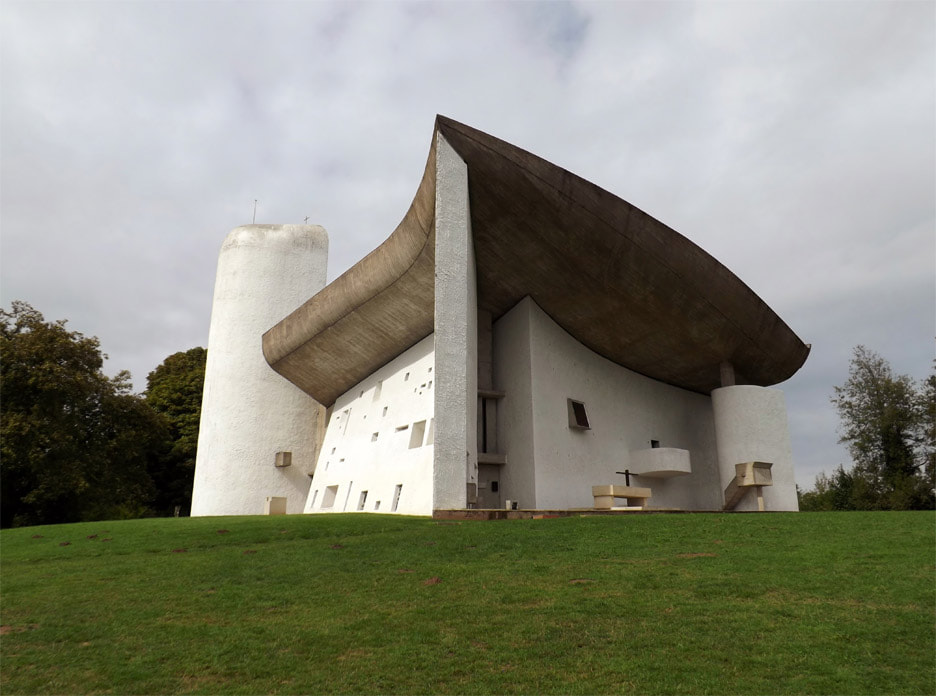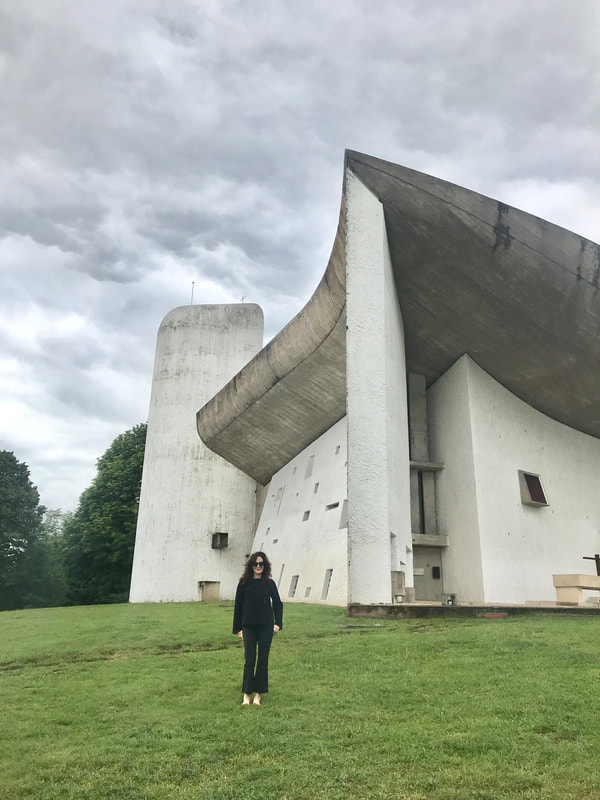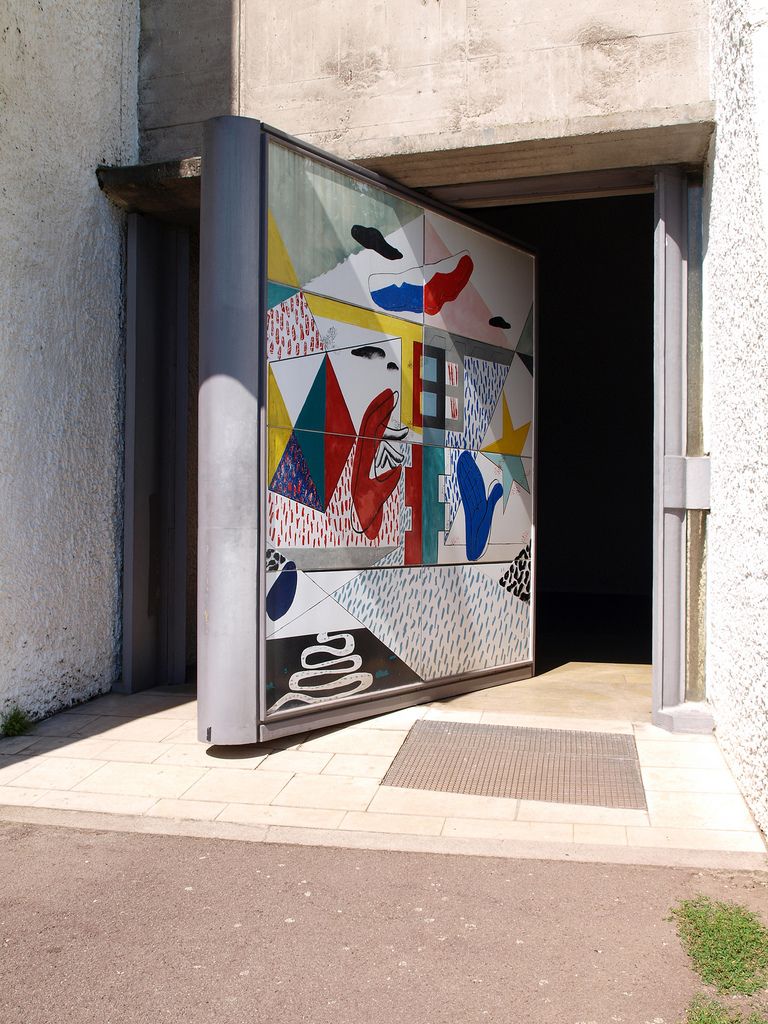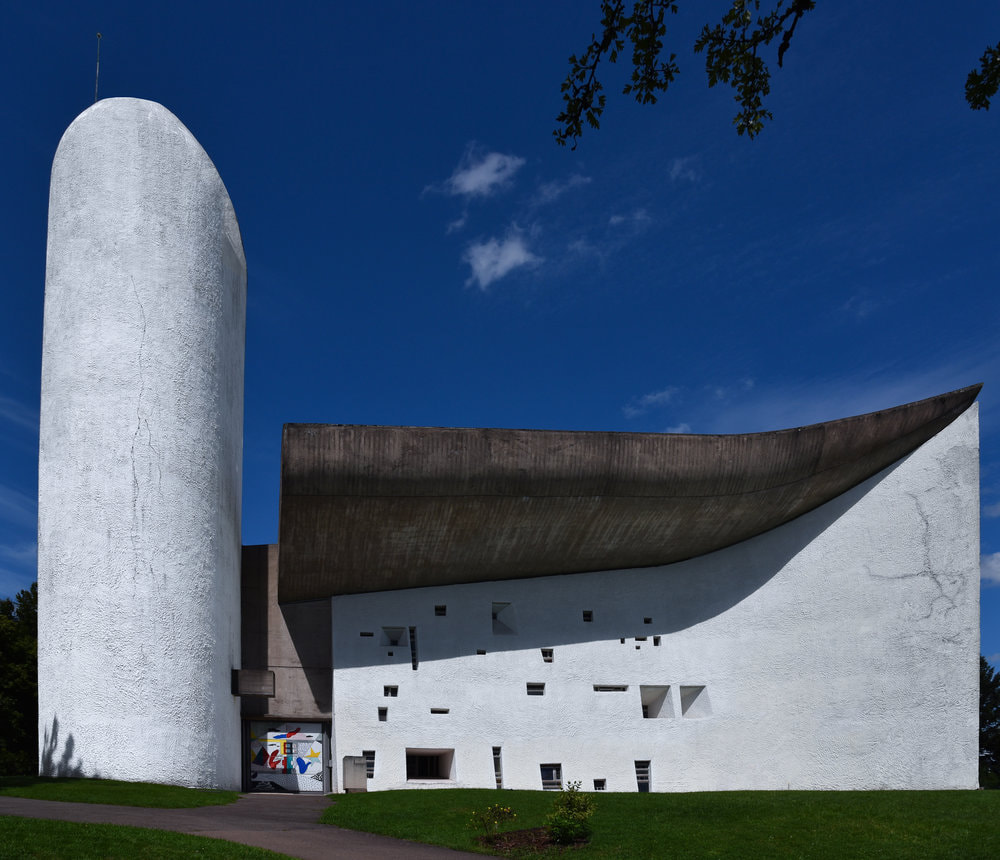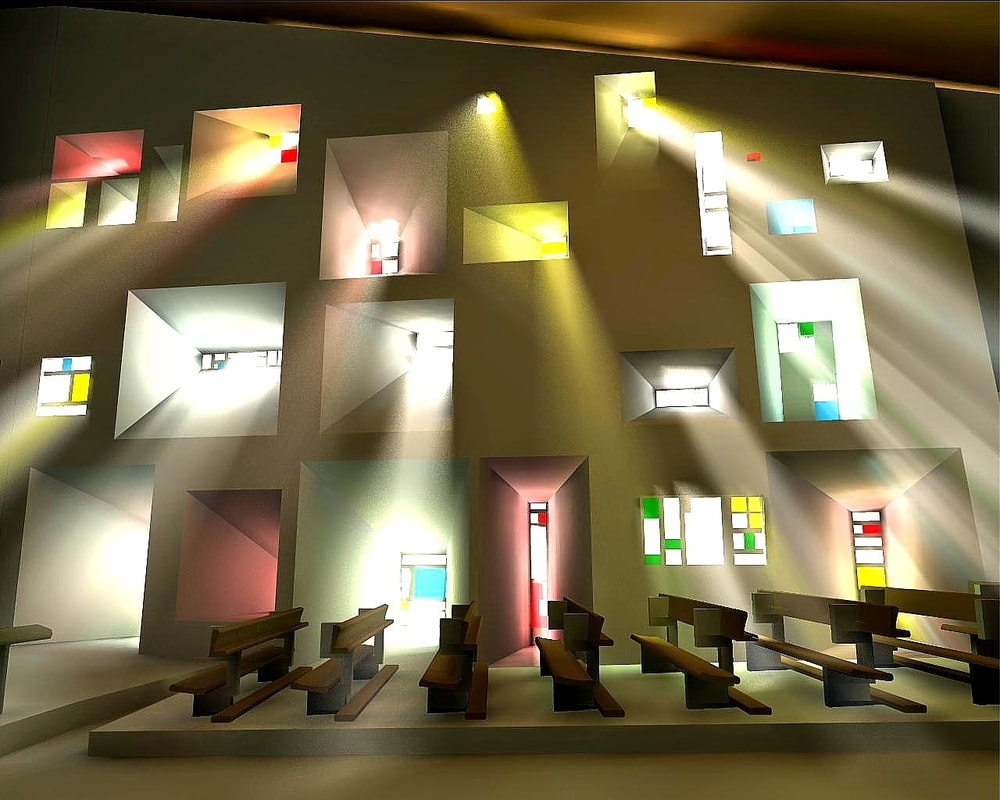Architecture pilgrimage is one of my favorite forms of travel. It sharpens your taste, makes you understand and feel architecture in a way you cannot encounter through photographs, and it brings joy and peace. This time, while visiting Basel for the Art Basel week, we took a day trip to see one of the most intriguing masterpieces of the mid-century years. Just a short drive east of Basel, stands the Chapel of Notre Dame du Haut, built on the top of a hill in the sleepy French town of Ronchamp, in a place where a fourth-century church was initially built. It is the most surreal building of Le Corbusier.
The brain behind the famed building was no less fascinating and influential than the building itself. His name was Marie-Alain Couturier (1897-1954), a Dominican priest who was one of the editors of the highly influential journal L’Art sacre. He had a great interest in avant-garde art and in its potential to complement the modern church. Couturier was responsible for the first abstract stained glass windows in churches, and patronized work by Fernand Leger, Henri Matisse, and Jacques Lipchitz. In 1950 Father Couturier approached Le Corbusier, but he did not live to see Chapel’s inauguration, five years later.
The brain behind the famed building was no less fascinating and influential than the building itself. His name was Marie-Alain Couturier (1897-1954), a Dominican priest who was one of the editors of the highly influential journal L’Art sacre. He had a great interest in avant-garde art and in its potential to complement the modern church. Couturier was responsible for the first abstract stained glass windows in churches, and patronized work by Fernand Leger, Henri Matisse, and Jacques Lipchitz. In 1950 Father Couturier approached Le Corbusier, but he did not live to see Chapel’s inauguration, five years later.
This building came to express the way in which abstract art and minimal modernist architecture have the power to stimulate religious feelings, peace, and joy. Le Corbusier designed it as a ‘total work of art,’ creating the building, its interiors, stained glass windows, mural on the entrance door, and a candelabra that was meant to evoke the Biblical blazed bush. When completed in 1955 it looked like an enormous white sculpture, unlike any other building. And today, the perfect destination for an architecture pilgrimage.

